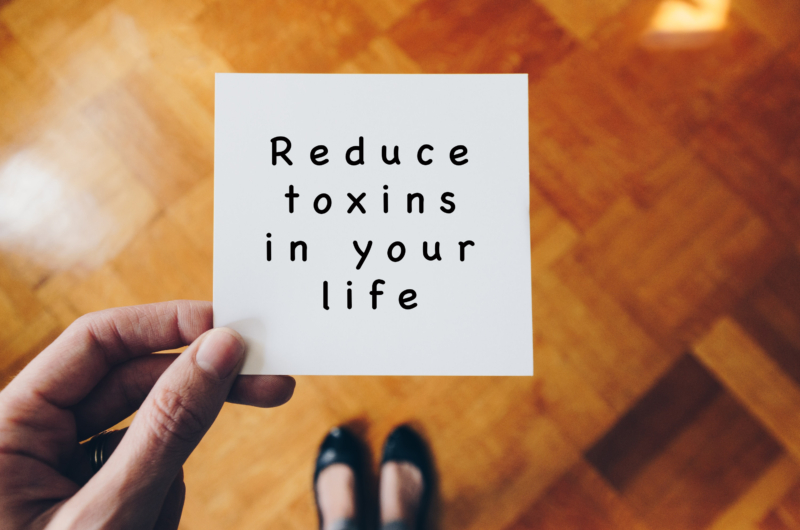If you have ever wondered why you still struggle to maintain a healthy weight even when you eat less and exercise more, you might just discover the reason in this article. The fact is that the steady rise in levels of people who are overweight or obese over recent decades cannot be fully explained by less–than–optimal diet and exercise habits alone.
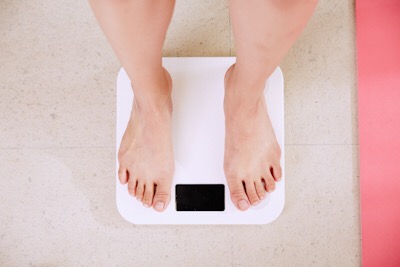
An overload of toxins can pack on pounds as well as sabotage your best weight-loss efforts. While our body is designed to deal with a certain amount of toxins, the unprecedented amounts of chemicals and other toxic substances we encounter in today’s world can overwhelm its capacity to detoxify and eliminate them all.
Toxins and Fat Cells – a Vicious Cycle
The type of toxins that tend to accumulate and most affect health and normal metabolic function are fat-soluble ones that are more difficult for the body to eliminate. These toxins must first be processed and converted to a water-soluble form via different detoxification phases and pathways in the liver – the body’s key fat-burning organ.
Among its countless jobs, the liver breaks down excess carbohydrates and proteins and converts them into fatty acids that are either burned for fuel or stored in fat cells and fatty tissues. It also is responsible for regulating blood sugar levels, which impact the degree to which insulin converts excess carbohydrates to fat.
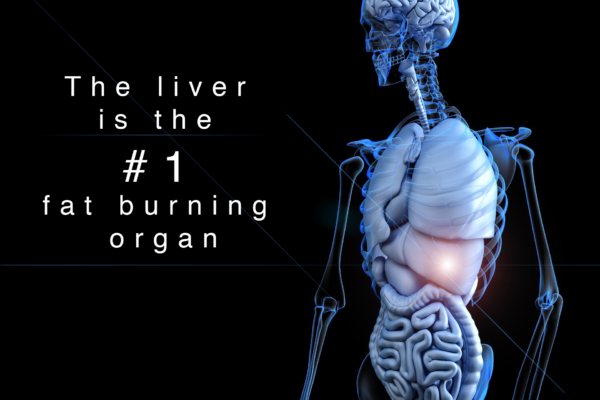 A liver that is overwhelmed with a daily barrage of toxic chemicals and substances on top of trying to perform its other functions cannot begin to efficiently filter and process them all. Consequently, many toxins overflow into the bloodstream where they can then circulate throughout the body. In order to protect organs and glands from the damage these toxins might inflict, the body takes circulating toxins the liver was unable to process and stores them in fat cells. When existing fat cells max out their ability to expand, additional fat cells form to provide new storage sites. Rather than a fat-burning organ, the liver becomes a fat-storing organ.
A liver that is overwhelmed with a daily barrage of toxic chemicals and substances on top of trying to perform its other functions cannot begin to efficiently filter and process them all. Consequently, many toxins overflow into the bloodstream where they can then circulate throughout the body. In order to protect organs and glands from the damage these toxins might inflict, the body takes circulating toxins the liver was unable to process and stores them in fat cells. When existing fat cells max out their ability to expand, additional fat cells form to provide new storage sites. Rather than a fat-burning organ, the liver becomes a fat-storing organ.
A vicious cycle ensues that slows metabolism and makes it difficult to lose weight: the more toxins accumulate, the more fat cells expand to store them and the harder it is to lose weight. This is due to the fact that toxins adversely affect metabolic function and impair the body’s ability to burn fat.
Difficult-to-lose pounds are often toxic fat.
Chemicals that Alter Metabolism and Damage Health
More and more studies are revealing that certain types of dietary and environmental toxins actually act as “endocrine disruptors” that alter the normal function of hormones and other signaling molecules in the body. The latest research, supported by dozens of studies, shows a clear link between one particular class of endocrine disrupting chemicals known as “obesogens” and the notable rise in the number of children and adults who are overweight or obese today. The fact that worldwide obesity rates have doubled since 1980 and a sharp rise in the prevalence of these kinds of chemicals has taken place in the same time period is no coincidence.
Besides their adverse effect on metabolism, many obesogen chemicals are also linked in studies and research to contributing to the development of heart disease, diabetes, neurological disorders, abnormal cognitive development, attention deficit disorders, cancer (especially breast and prostate cancers) kidney disease, liver enzyme abnormalities, birth defects, altered reproductive development, infertility, PCOS, premature puberty, asthma, immune disorders and more. Everyone should be wary and take measures to avoid these health-disrupting chemicals, regardless of whether they are overweight or not.
 Children are at much greater risk from exposure to endocrine disrupting chemicals as they lack sufficient enzymes needed to detoxify and eliminate them. Exposure during pregnancy or early childhood causes the most metabolic disturbances. These chemicals are able to cross the placenta and into the circulation of the fetus and can also be transferred from the mother to the baby through breast milk. A report issued by the National Institute of Environmental Health Sciences and the Environmental Protection Agency revealed that even slight exposure to endocrine-disrupting chemicals at critical points in development can alter metabolism and predispose a child to excess weight gain later in life as well as other health problems. Currently, about a third of U.S. children are overweight or obese and over 60 percent of obese children will become obese adults.
Children are at much greater risk from exposure to endocrine disrupting chemicals as they lack sufficient enzymes needed to detoxify and eliminate them. Exposure during pregnancy or early childhood causes the most metabolic disturbances. These chemicals are able to cross the placenta and into the circulation of the fetus and can also be transferred from the mother to the baby through breast milk. A report issued by the National Institute of Environmental Health Sciences and the Environmental Protection Agency revealed that even slight exposure to endocrine-disrupting chemicals at critical points in development can alter metabolism and predispose a child to excess weight gain later in life as well as other health problems. Currently, about a third of U.S. children are overweight or obese and over 60 percent of obese children will become obese adults.
How Obesogens Make and Keep You Fat
Obesogens contribute to weight gain and weight loss resistance in a variety of ways. Even when individuals adhere to normal dietary and exercise habits, these fat-soluble toxins can literally reprogram the body to store fat by interfering with hormonal communication and appetite control mechanisms, decreasing calorie burning, and slowing metabolic rate. Listed below are specific examples of how toxins, particularly obesogens, adversely affect metabolism:
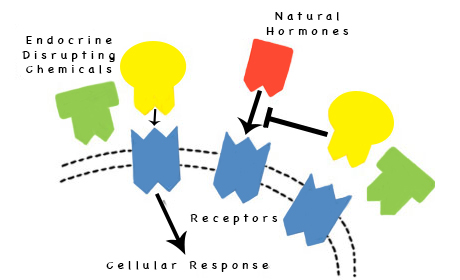 Alter Hormone Balance – obesogens can mimic the normal function of hormones such as estrogen or testosterone. By occupying or damaging hormone receptors on cells, these chemicals can block the effects of hormones altogether or directly stimulate or inhibit the endocrine system to over or under produce them. For instance, obesogens can promote estrogen dominance by occupying estrogen receptor sites and raising estrogen levels. Estrogen promotes fat storage and undermines the body’s ability to build lean muscle. Too much estrogen (or “estrogen dominance” as it is known) is also implicated in the development of breast and other cancers.
Alter Hormone Balance – obesogens can mimic the normal function of hormones such as estrogen or testosterone. By occupying or damaging hormone receptors on cells, these chemicals can block the effects of hormones altogether or directly stimulate or inhibit the endocrine system to over or under produce them. For instance, obesogens can promote estrogen dominance by occupying estrogen receptor sites and raising estrogen levels. Estrogen promotes fat storage and undermines the body’s ability to build lean muscle. Too much estrogen (or “estrogen dominance” as it is known) is also implicated in the development of breast and other cancers.
Damage Cell Mitochondria – the build-up of toxins within cells creates inflammation and oxidative stress that damages the cell’s mitochondria, the internal “power-plants” responsible for converting sugars and fats into energy. When toxic accumulation is high, less energy is available to burn fatty acids and fuel turns into unwanted pounds instead.
Contribute to Leptin Resistance – by attaching to the outer membrane of cells and occupying receptor sites, obesogen toxins cause cells to continually release leptin (a hormone produced within fat cells that signals the brain that the body has eaten enough). When leptin levels remain elevated too long, cell receptors start to burn out and become unresponsive to leptin’s message. Leptin resistance causes people to overeat since their brain never receives the signal that lets them know they are full.
Lower Thyroid Function – toxins suppress levels of the active thyroid hormone (T3) which slows the resting metabolic rate and reduces a person’s fat burning capacity. Toxins also damage thyroid receptors and induce a particular liver enzyme to excrete T4 thyroid hormone into bile for elimination via the colon. Certain chemicals occupy thyroid cell receptors, thereby blocking the uptake of iodine needed to produce thyroid hormones.
Interfere with Appetite-Control Mechanisms – toxins damage the mechanisms in the brain that allow hormones and neurotransmitters to influence appetite and behavior.
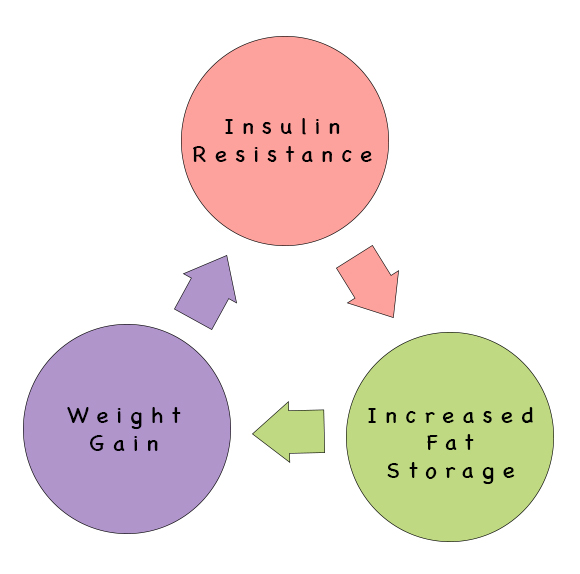 Induce Insulin Resistance – toxins like BPA (a common obesogen) can contribute to insulin resistance by poisoning insulin receptor sites on the cell that allows glucose to get inside. Regular exposure to BPA also suppresses the release of a hormone called adiponectin that works to increase insulin sensitivity and reduce inflammation. When insulin resistance develops, the body overproduces insulin and this typically increases fat storage. The link between obesity and the development of diabetes is unquestionable. A study in the journal Diabetes Care discovered that people with higher levels of particular endocrine disrupting chemicals had as much as a 38-fold greater risk of diabetes than people with low levels even if they were not overweight. According to Dr. Joseph Pizzoro, author of The Toxin Solution, having BPA in your urine above 5 micrograms per liter doubles risk of diabetes. He also indicates that just eating canned soup every day for a week would raise BPA levels over four times this threshold (BPA is used in the lining of many cans). A further mechanism that contributes to the development of diabetes is how toxins can damage beta cells in the pancreas that produce insulin, resulting in decreased ability to secrete sufficient amounts when it is needed.
Induce Insulin Resistance – toxins like BPA (a common obesogen) can contribute to insulin resistance by poisoning insulin receptor sites on the cell that allows glucose to get inside. Regular exposure to BPA also suppresses the release of a hormone called adiponectin that works to increase insulin sensitivity and reduce inflammation. When insulin resistance develops, the body overproduces insulin and this typically increases fat storage. The link between obesity and the development of diabetes is unquestionable. A study in the journal Diabetes Care discovered that people with higher levels of particular endocrine disrupting chemicals had as much as a 38-fold greater risk of diabetes than people with low levels even if they were not overweight. According to Dr. Joseph Pizzoro, author of The Toxin Solution, having BPA in your urine above 5 micrograms per liter doubles risk of diabetes. He also indicates that just eating canned soup every day for a week would raise BPA levels over four times this threshold (BPA is used in the lining of many cans). A further mechanism that contributes to the development of diabetes is how toxins can damage beta cells in the pancreas that produce insulin, resulting in decreased ability to secrete sufficient amounts when it is needed.
Change Genetic Expression – toxins alter gene expression (the ability of genes to switch on or off to adapt to changes in the body) by activating or suppressing genes in ways that can be harmful. For instance, certain endocrine disrupting chemicals activate a receptor called PPAR gamma that acts like a switch with the ability to reprogram stem cells to become fat cells.
Common Obesogens and Where They Reside
Obesogen chemicals may be found in plastic storage containers and bottles, non-stick cookware, cosmetics, skincare products, household cleaners and laundry products, weed killers, furniture, carpets and other various products and sources in addition to our food, water and air. Though by no means an exhaustive list, here are some common obesogen chemicals or classes of chemicals and where they are typically found:
 • Bisphenol A (BPA) – is an industrial chemical used in making polycarbonate plastic found in many types of plastic water and food storage containers, epoxy resins that line most metal food and soft-drink cansand jar lids, thermal cash register receipts and some dental sealants or composites. One in ten cans of food tested for BPA contained levels in excess of 200 times governmental safe exposure levels for industrial chemicals. Testing conducted by the Centers for Disease Control and Prevention (CDC) found detectable levels in 93 percent of human urine samples tested. In addition to adverse metabolic effects, BPA contributes to hormone imbalance by acting as an estrogen mimic. BPA exposure has also been linked to a number of conditions that includes heart disease, diabetes, cancers (particularly breast cancer) and developmental disorders.
• Bisphenol A (BPA) – is an industrial chemical used in making polycarbonate plastic found in many types of plastic water and food storage containers, epoxy resins that line most metal food and soft-drink cansand jar lids, thermal cash register receipts and some dental sealants or composites. One in ten cans of food tested for BPA contained levels in excess of 200 times governmental safe exposure levels for industrial chemicals. Testing conducted by the Centers for Disease Control and Prevention (CDC) found detectable levels in 93 percent of human urine samples tested. In addition to adverse metabolic effects, BPA contributes to hormone imbalance by acting as an estrogen mimic. BPA exposure has also been linked to a number of conditions that includes heart disease, diabetes, cancers (particularly breast cancer) and developmental disorders. • Organocholorine pesticides – chlorinated hydrocarbons used in agriculture and mosquito control. Every day, the average American is exposed to 10-13 different pesticides through food, beverages and drinking water. Ten of the most common pesticides are endocrine disrupting chemicals associated with weight gain. The leading sources of residue from these pesticides are certain types of non-organic produce, nonorganic beef, nonorganic dairy products (particularly butter that is high in fat where toxins concentrate), farm-raised fish, non-organic coffee and tap water.
• Organocholorine pesticides – chlorinated hydrocarbons used in agriculture and mosquito control. Every day, the average American is exposed to 10-13 different pesticides through food, beverages and drinking water. Ten of the most common pesticides are endocrine disrupting chemicals associated with weight gain. The leading sources of residue from these pesticides are certain types of non-organic produce, nonorganic beef, nonorganic dairy products (particularly butter that is high in fat where toxins concentrate), farm-raised fish, non-organic coffee and tap water.
Why You Need to Detoxify, Especially BEFORE Weight Loss
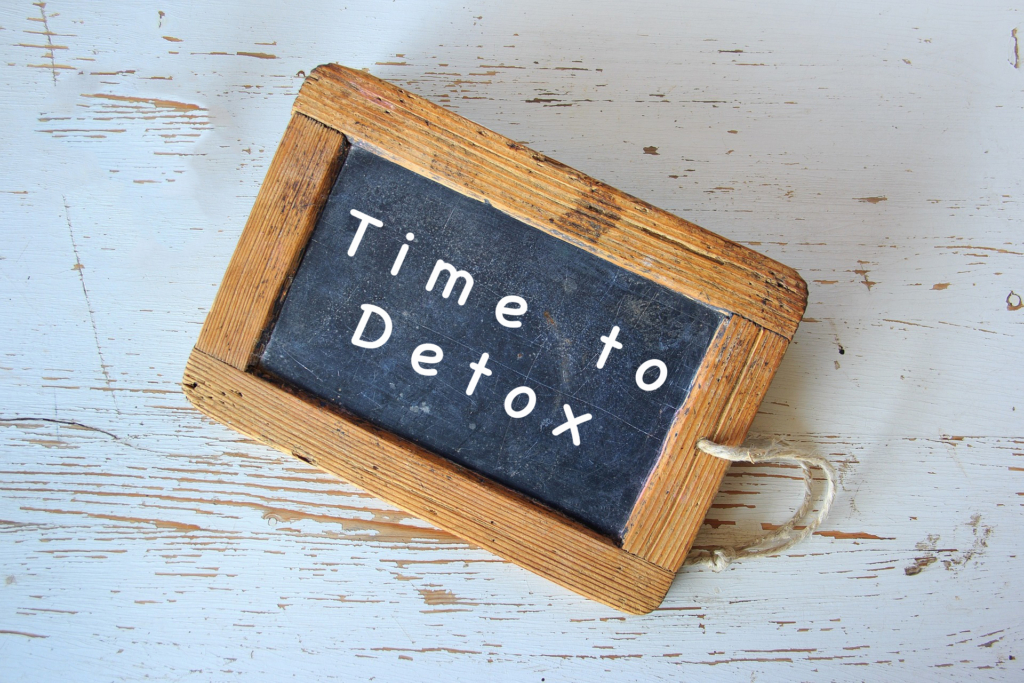 Detoxification is critical to long-term health and successful weight loss. Even people with long-standing weight problems find they can lose and maintain their weight much more easily when their body is free of damaging toxins. Taking steps to assist your body in removing accumulated toxins eliminates a primary reason fat was stored in the first place. Plus it helps your body more easily let go of excess fat that it no longer needs as a protective defense mechanism. At the same time, it reduces your risk of a number of health disorders and diseases linked with the harmful effects of these toxins.
Detoxification is critical to long-term health and successful weight loss. Even people with long-standing weight problems find they can lose and maintain their weight much more easily when their body is free of damaging toxins. Taking steps to assist your body in removing accumulated toxins eliminates a primary reason fat was stored in the first place. Plus it helps your body more easily let go of excess fat that it no longer needs as a protective defense mechanism. At the same time, it reduces your risk of a number of health disorders and diseases linked with the harmful effects of these toxins.
Since fat cells release higher concentrations of toxins when you lose weight, dieting without first detoxifying only makes you more likely to regain pounds and become more prone to future weight gain.
Weight loss apart from detoxification is the first step to weight loss resistance and a slower metabolism.
In studies where pesticide levels were checked before, during and after weight loss, researchers found that people who released greater amounts of pesticides from fat stores during weight loss experienced a much slower metabolism after weight loss. This is due to the metabolic damage that occurs from a deluge of toxins reentering the bloodstream when the liver and other detoxification organs are not prepared to handle them.
However, if you take measures to first reduce your toxic load and provide your detoxification organs and processes the extra support they need, surplus toxins will less likely overwhelm your body’s ability to efficiently process and quickly eliminate them. Moreover, you will be spared suffering symptoms of toxicity (like headaches) that typically occur when too many toxins are released back into the system at once.
Your First Step: Reduce Toxic Exposure
 Before beginning any type of detoxification protocol, it is advisable to first take steps to reduce your body’s toxic load by eliminating or at least minimizing as much as possible exposure to obesogens and other toxic chemicals in your diet, home and personal care products. Lightening the load on your detoxification organs (especially the liver) by limiting the amount of toxins that must be processed is vital to accelerating the release of toxins stored in fat cells for years. It is pointless to attempt to get rid of a backlog of these toxins if you do not take measures to reduce the amount of incoming ones.
Before beginning any type of detoxification protocol, it is advisable to first take steps to reduce your body’s toxic load by eliminating or at least minimizing as much as possible exposure to obesogens and other toxic chemicals in your diet, home and personal care products. Lightening the load on your detoxification organs (especially the liver) by limiting the amount of toxins that must be processed is vital to accelerating the release of toxins stored in fat cells for years. It is pointless to attempt to get rid of a backlog of these toxins if you do not take measures to reduce the amount of incoming ones.
While you cannot begin to completely eliminate your exposure to all of these endocrine disrupting chemicals since they are just about everywhere, you can at least start the process of getting as many out of your diet and environment as possible. The information that follows will help you identify toxic sources and give you specific information about how you can begin to minimize your exposure.
FOOD AND WATER
 • Eat a diet of fresh, whole unprocessed foods – the more you eat real whole foods, the less your body will be adversely affected by the hundreds of chemicals in food packaging on top of over 3,000 additives and preservatives in our processed food supply today. Keep in mind that the longer the list of ingredients in a food product, the more likely it is that the product contains obesogens and other harmful chemicals.
• Eat a diet of fresh, whole unprocessed foods – the more you eat real whole foods, the less your body will be adversely affected by the hundreds of chemicals in food packaging on top of over 3,000 additives and preservatives in our processed food supply today. Keep in mind that the longer the list of ingredients in a food product, the more likely it is that the product contains obesogens and other harmful chemicals.  • Choose fish that are wild-caught rather than eating conventional or farm-raised fish – farm-raised fish (especially salmon) are significantly more toxic than wild caught as the high-fat feed they are given makes them fattier and toxins bioaccumulate in fat. Plus the feed is known to contain dioxins, PCBs (about eight times higher than would be found in wild caught salmon), chlorinated pesticides and a number of other drugs and chemicals. According to Dr. Walter Crinnion, author of Clean, Green and Lean – Getting Rid of the Toxins that Make You Fat, farmed Atlantic salmon is about the most toxic food you can eat. Plus the fatty acid profile is skewed in the wrong direction with lower amounts of omega-3 than wild–caught and excess omega-6 fatty acid levels due to the grains in the feed. Look for salmon labeled “wild-caught” and “Alaskan”. If the product is just labeled “salmon” or “Atlantic salmon”, you can know it is farmed. When purchasing other fish, go with ones lower in mercury and always avoid larger predatory fish like tuna, swordfish and king mackerel that are especially high in mercury. For more information about mercury levels and other information about purchasing safe fish, check out the Environmental Working Group Seafood Guide or recommendations from Seafood Watch.
• Choose fish that are wild-caught rather than eating conventional or farm-raised fish – farm-raised fish (especially salmon) are significantly more toxic than wild caught as the high-fat feed they are given makes them fattier and toxins bioaccumulate in fat. Plus the feed is known to contain dioxins, PCBs (about eight times higher than would be found in wild caught salmon), chlorinated pesticides and a number of other drugs and chemicals. According to Dr. Walter Crinnion, author of Clean, Green and Lean – Getting Rid of the Toxins that Make You Fat, farmed Atlantic salmon is about the most toxic food you can eat. Plus the fatty acid profile is skewed in the wrong direction with lower amounts of omega-3 than wild–caught and excess omega-6 fatty acid levels due to the grains in the feed. Look for salmon labeled “wild-caught” and “Alaskan”. If the product is just labeled “salmon” or “Atlantic salmon”, you can know it is farmed. When purchasing other fish, go with ones lower in mercury and always avoid larger predatory fish like tuna, swordfish and king mackerel that are especially high in mercury. For more information about mercury levels and other information about purchasing safe fish, check out the Environmental Working Group Seafood Guide or recommendations from Seafood Watch.
FOOD PREP AND STORAGE GUIDELINES

*Can be purchased on Amazon from link below.
• Avoid or greatly limit the use of plastics, especially for heating or storing food– use glass or stainless steel containers for your food and drink as much as possible. Make sure any plastic containers you do use are free of BPA, phthalates and other harmful chemicals. Keep in mind that recycling code #3 contains phthalates and recycling code #7 is generally polycarbonate plastic (PC) made with BPA (the #7 code can also be used as a catch-all for products with multiple materials even if it does not contain BPA or products made from PLA, a compostable plastic made from starch – there will usually be a leaf symbol, PLA or the word “compostable” when that is the case). While refillable five gallon water jugs and other containers are usually #7 and do contain BPA, you can now find the same type of water containers that are BPA-free and labeled accordingly. Recycling codes #1 (polyethylene terephthalate or PET) is commonly used for single-use water bottles as well as soft drink, sports drink, condiment, salad dressing and vegetable oil bottles. Though PET is BPA-free, it can leach a toxic metalloid known as antimony into food and beverages if exposed to heat. Recycling code, #2 (high-density polyethylene or HDPE) is commonly used in milk and juice bottles, cereal box liners and recycling code #5 (polypropylene or PP) is used in things like yogurt and deli containers (you can generally find the recycling code number within a triangle on the bottom of products). Products with the recycling codes #1, #2 and #5 are generally safer options that do not as readily leach chemicals into foods or beverages. BPA-free storage container products are now made by companies such as Rubbermaid (since 2009) and Tupperware (since 2010).
• Avoid use of Styrofoam cups, plates and take-out containers – these products contain the chemical polystyrene or PS (recycling code #6) that can release estrogenic compounds and is also considered a chemical carcinogen. Especially avoid drinking hot liquids from Styrofoam cups or eating warm or hot food off Styrofoam plates. If you do bring home food from a restaurant in a Styrofoam container, transfer it to a glass or other safe container as soon as possible.
• Avoid using any plastic container for food or liquid that is the least bit warm or hot. Do not put plastic food or liquid containers in the dishwasher or microwave as the heat can cause the plastic material to break down more readily, releasing the harmful chemicals inside. Even if a frozen meal or other food in a plastic coated paperboard container advertises “microwave safe”, this only indicates it will not melt when heated but does not mean the chemical “plastics” will not seep into your food. Use ovenproof glass or ceramic dishes when heating food in a microwave or oven.
• Limit use of plastic wrap and food storage bags or switch to safer options– if you do microwave food, avoid using plastic wrap to cover the food – instead use a microwave safe dish, unbleached wax paper, parchment paper or chlorine-free paper towel.Though most major plastic wrap brands are now made with phthalate-free LDPE (low-density polyethylene) rather than the endocrine-disrupting chemical PVC (polyvinyl chloride), it is still advisable to not use plastic wraps in direct contact with food, especially fatty foods like meat or cheese (remove cling type plastic wrapping if used on items like meat or cheese before storing at home). And while LDPE is a safer option than PVC, it is still is a plastic and has the potential to release estrogenic chemicals. Completely safe replacement options for plastic wrap are Bee’s Wrap (reusable food wrap) and silicone stretchtop lids to use with glass and other non-plastic containers (available on Amazon). BPA-free plastic storage and sandwich bags are available (Up & Up brand at Target, Cryovac, Lunchskins, Biobag, Whole Foods 365 brand and others you can find online) as well as plastic-free reusable options made with silicone, cotton cloth, etc. that you can also find online.
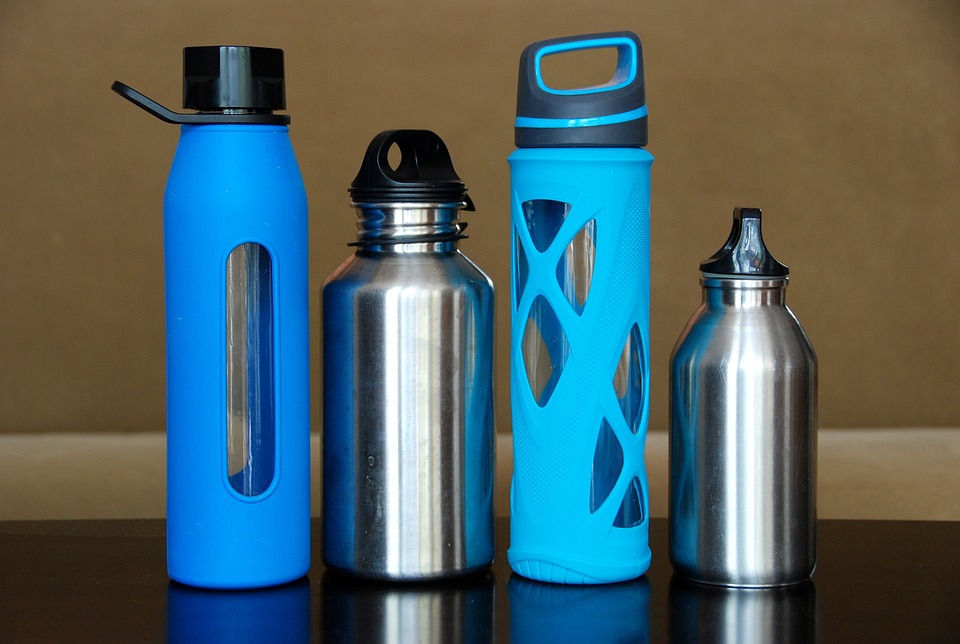
HOME/LAWN AND GARDEN
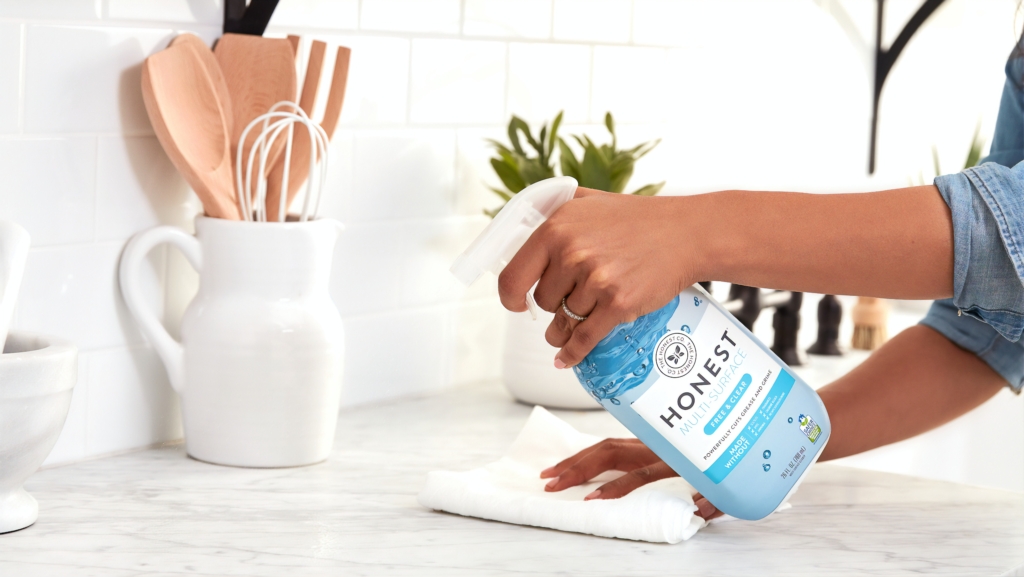 • Use safe, non-toxic household cleaners and laundry products– choose products that are free of fragrances, phosphates, bleach, and petroleum-based surfactants. Since manufacturers are not mandated by federal law to list all the product ingredients on the label, look for products with the Safer Choice label that meets the U.S. EPA safer product standards and discloses all ingredients. You can also refer to EWG’s Guide to Healthy Cleaning to find safety ratings for more than 2500 products. Or simply go with reliable “green” non-toxic brands such as Seventh Generation, BioKleen, ECOS, Ecover, Better Life, Method, etc. Another option that will save you money is to make your own cleaning products from common and inexpensive ingredients like white vinegar, baking soda, borax, castile soap, essential oils, lemon juice, etc. Easy DIY recipes for such products are readily available online.
• Use safe, non-toxic household cleaners and laundry products– choose products that are free of fragrances, phosphates, bleach, and petroleum-based surfactants. Since manufacturers are not mandated by federal law to list all the product ingredients on the label, look for products with the Safer Choice label that meets the U.S. EPA safer product standards and discloses all ingredients. You can also refer to EWG’s Guide to Healthy Cleaning to find safety ratings for more than 2500 products. Or simply go with reliable “green” non-toxic brands such as Seventh Generation, BioKleen, ECOS, Ecover, Better Life, Method, etc. Another option that will save you money is to make your own cleaning products from common and inexpensive ingredients like white vinegar, baking soda, borax, castile soap, essential oils, lemon juice, etc. Easy DIY recipes for such products are readily available online.
*Can be purchased at link below.
• Get a shower filter– chlorine and chloramines are two of the most widely used chemicals in municipal water supplies. The problem with showering or bathing with chlorinated water is that heat from the warm water causes pores to expand and open up, accelerating the absorption of chemicals and contaminants through the skin over a large area of the body. The heat of shower water causes chemicals to vaporize and release into the air in greater amounts than were present in the water. Vapors inhaled into the lungs are then directly transferred to the blood stream. Since chemicals vaporize faster and at a lower temperature than water, steam inhalation can contain 50 times the level of chemicals of the actual tap water. It is estimated that one ten-minute shower is equivalent to drinking eight glasses of chlorinated water. While chlorine may get rid of bad bacteria, it kills good bacteria as well and can upset the delicate bacterial balance on the skin. It also interacts with other matter in the water and forms harmful byproducts like trihalomethanes (THMs), one of which is chloroform, a known carcinogen. A simple solution is to obtain a shower filter that removes chlorine and other harmful compounds from the water. These units are readily available for under $50. For tub baths with unfiltered water, there are products with powder that dissolves 99% of the chlorine for around $20. Or you can get a Crystal Ball Bath Dechlorinator that can last for 200 baths for around $45 (filter replacements available).
PERSONAL CARE/HEALTH AND BEAUTY AIDS
 • Use non-toxic cosmetics and skin care products– check EWG’s Skin Deep to identify which products you are putting on your skin may be toxic and which are safer to use. Remember, approximately 70 percent of anything you apply to your skin absorbs into your bloodstream and goes to your liver the same as if you had consumed it. Make sure that the products you use are free of parabens, acrylates, aluminum, formaldehyde, oxybenzone, triclosan, polyethylene glycols, and phthalates. The parabens used most commonly in cosmetics are methylparaben, propylparaben, butylparaben, and ethylparaben.You can also learn ingredients and information on beauty, personal care and household products by scanning product barcodes on your phone with the Think Dirty/Shop Clean app.
• Use non-toxic cosmetics and skin care products– check EWG’s Skin Deep to identify which products you are putting on your skin may be toxic and which are safer to use. Remember, approximately 70 percent of anything you apply to your skin absorbs into your bloodstream and goes to your liver the same as if you had consumed it. Make sure that the products you use are free of parabens, acrylates, aluminum, formaldehyde, oxybenzone, triclosan, polyethylene glycols, and phthalates. The parabens used most commonly in cosmetics are methylparaben, propylparaben, butylparaben, and ethylparaben.You can also learn ingredients and information on beauty, personal care and household products by scanning product barcodes on your phone with the Think Dirty/Shop Clean app.• Avoid perfumes and other products with the word “fragrance” or “parfum” on the label – synthetic fragrance may be comprised of literally hundreds of different chemicals (mostly petrochemicals) and manufacturers are not required to disclose the exact ingredients of their proprietary formula.

Once you begin to reduce your body’s toxic load, you can then engage in a detoxification protocol that will enable your body to safely release the backlog of stored toxins that have accumulated for years. Taking time to focus on cleansing and detoxifying your body is one of the most powerful health habits you can develop.Not only will it allow your body to shed that excess toxic fat and relieve other symptoms rooted in toxicity (such as low energy, brain fog, headaches or dizziness, skin outbreaks, disrupted sleep, cellulite or fluid retention, body odor, bad breath, coated tongue etc.) but it will also help to prevent disease and restore its natural ability to heal, repair and rejuvenate.
Just like a well-maintained vehicle is less likely to break down when it is serviced regularly, taking measures at least once or twice a year to accelerate your body’s capacity to cleanse and detoxify will enable it to function better and remain healthier far longer.A more efficient metabolism and a body free of the health-robbing effects of too many toxins are well worth the effort!
In the next issue, we will explore the different components involved in effective cleansing and detoxification protocols and give you specific steps and guidelines to follow to make your experience successful.
Sources:
The Toxin Solution by Dr. Joseph Pizzorno
Clean, Green and Lean by Dr. Walter Crinnion
The New American Diet – How Secret “Obesogens” are Making Us Fat by Dr. Stephen Perrine
Mastering Your Metabolism – by Jillian Michaels
*Food storage containers can be purchased here.
*Shower filter can be purchased here.

